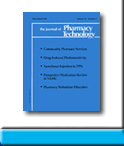 |
 |
THE MANAGEMENT OF DOG
BITES
Beth A McDermitt, Nancy L Romanchak, and Charles
D Ponte
To request full article click here.
OBJECTIVE: To review the contemporary management of dog bites with an emphasis on clinical presentation, wound care, microbiology, antimicrobial prophylaxis, and treatment.
DATA SOURCES: The published literature was searched by use of MEDLINE (1990–December 2000) and bibliographic reviews of relevant textbooks and review articles.
DATA SELECTION AND EXTRACTION: Review articles, case reports, appropriate meta-analyses, and relevant textbook chapters dealing with mammalian bites and their management were evaluated. All pertinent information was synthesized and incorporated into the present review.
DATA SYNTHESIS: The incidence of serious and fatal dog bites has increased because of the acquisition of larger, more aggressive breeds. School-age children and young adults are at the highest risk. Most bites occur on the upper extremities, although head and neck bites are also common. The risk of infection is greatest for crush injuries, puncture wounds, and hand wounds. Infection tends to develop within 24–36 hours of the injury. Complications include osteomyelitis, septic arthritis, tenosynovitis, and septicemia. Most infections are polymicrobial and involve organisms isolated from the skin of the patient and the indigenous oral flora of the dog. Bites should be initially managed under accepted wound care protocols. Wound closure remains controversial and should be reserved for facial and head wounds. Immobilization and elevation are essential for therapeutic success. Prophylactic antibiotics should be reserved for bites at high risk for infection and the immunocompromised host. Whether for prophylaxis or treatment, empiric antimicrobial therapy should be directed against the most common bacteria: Pasteurella spp., streptococci, staphylococci, and anaerobes. Duration and route are dependent on the location and severity of the wound.
CONCLUSIONS: Dogs remain the major cause of mammalian bites in the US. It is important for clinicians to have an understanding of the contemporary management of dog bites. Good wound care is central to the prevention and treatment of complications. Appropriate antimicrobial therapy should be directed against both aerobic and anaerobic flora. Careful monitoring is imperative, and antibiotic changes should be made based on clinical response and, if appropriate, the results of culture and sensitivity reports.
J Pharm Technol 2002;18:63-9.
To request full article click here.
|
|
|
||
|

